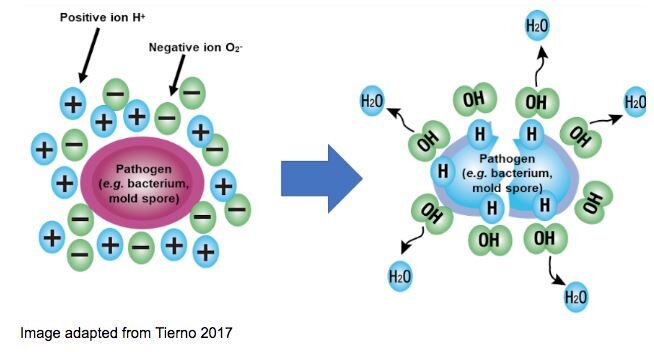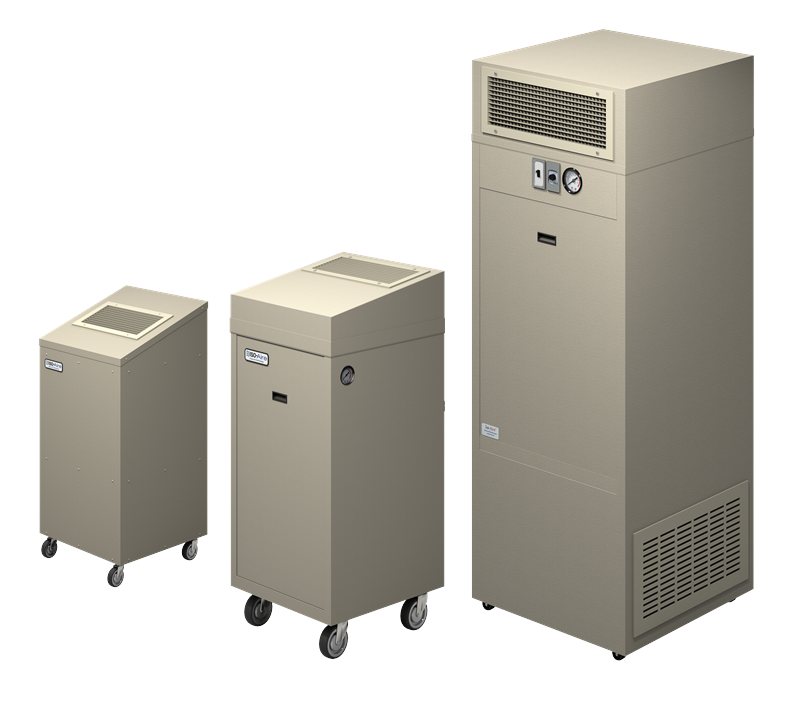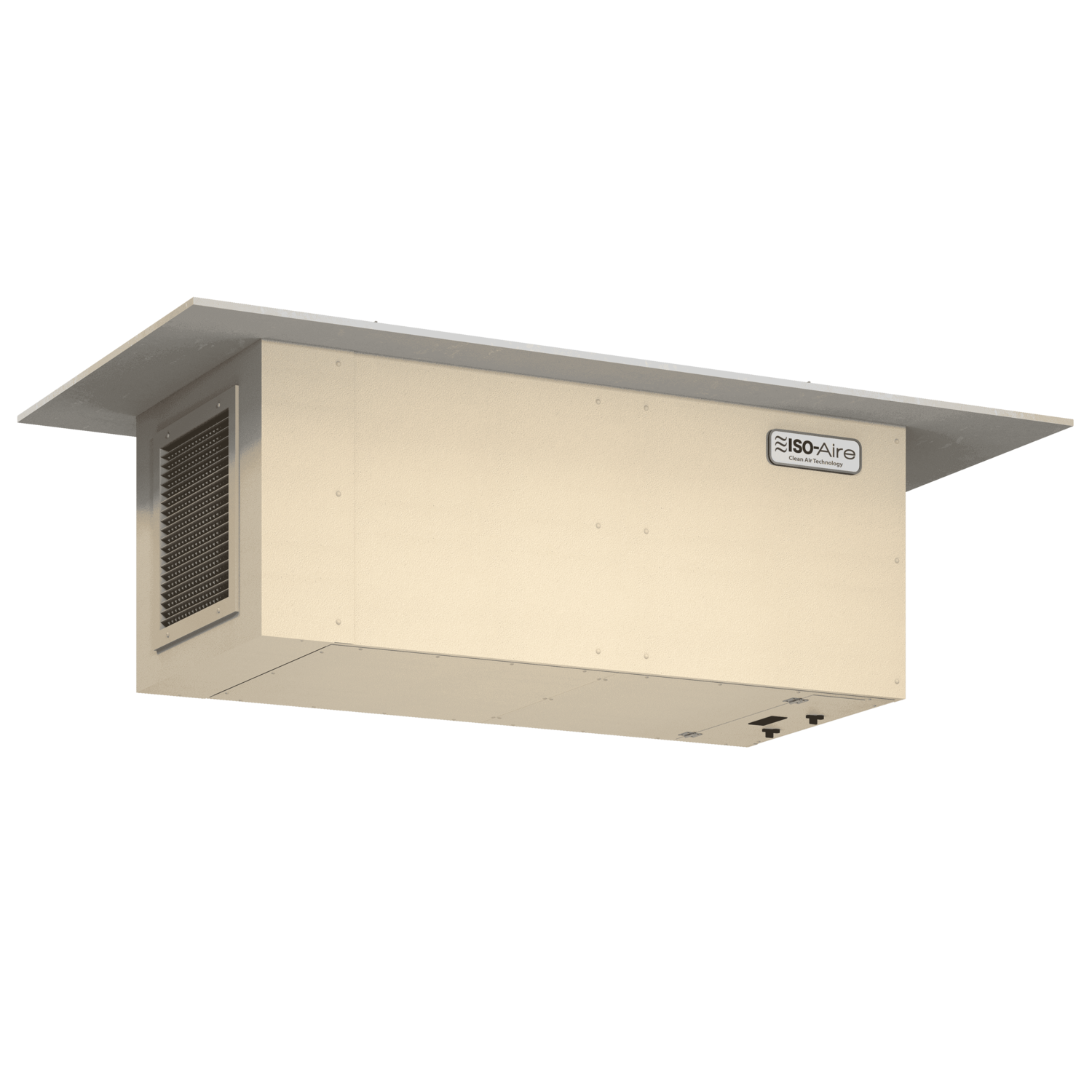What Is Needlepoint Bipolar Ionization and How Does It Work?
Ionic representation of salt (NaCl). Sodium (Na+) ions are positively charged, while chlorine ions (Cl-) are negatively charged.
Needlepoint bipolar ionization splits molecules in the air into positively and negatively charged ions. Ions occur naturally and are atoms that have either more or less electrons than usual. These opposite charges attract one another to form a compound. An example of a common ionic compound that we see in our daily lives is salt (sodium chloride). In this compound, sodium is positively charged (having one less electron) while chlorine is negatively charged (having one more electron). Needlepoint bipolar ionization is not a silver bullet and must be applied properly due to limitations in ion lifespan, and the difficulty of getting proper density of ions into occupied spaces.
How Does Needlepoint Bipolar Ionization Work Within an Air Purifier?
Needlepoint bipolar ionization creates ions similar to salt, only using air molecules like water vapor (gas form of liquid water). When water vapor molecules are hit by the high energy of the machine, they will split into O2- and H+, similar to when they split into H+ and OH-.
When needlepoint bipolar ionization is deployed in a space, the positive and negative ions surround air particles. This added mass helps the air particles gain mass so the amount of time they spend suspended in the breathing zone is reduced. Furthermore, as the positive and negative ions surround air particles that include pathogens (e.g. viruses, bacteria, mold spores) the ions pull hydrogen away from the pathogen.
In the case of a virus, the hydrogen is pulled away from its protein coat, or capsid. The hydrogen is a key component to the actual structure of the viral protein coat, and without it, the virus cannot infect. Think of the outer proteins of a virus as keys. They have to be able to fit the right lock (proteins on our cell’s surface). With a change in the key’s shape that resulted from the removal of hydrogen, it can no longer fit in the lock and infect us.
Watch: How does bipolar ionization work and how to apply properly
Needlepoint bipolar ionization doesn’t replace higher filtration like a HEPA filter but helps bolster a filtration solution to help treat viruses, bacteria, VOCs and odors.
Due to limitations in needlepoint bipolar ionization technology, how it is applied is extremely important. Ions last only about 60 seconds so many facilities have difficulty getting proper ion counts into the occupied spaces when the systems are mounted in the ductwork. Ions also do not work instantly and take time to neutralize pathogens.
When needlepoint bipolar ionization is integrated into a portable in-space system like an ISO-Aire™ commercial-grade air purifier, it allows for a more effective solution since it is paired with a HEPA and the ions are distributed right into the room without having to travel through the ductwork system. All ISO-Aire units utilize UL 2998 ozone-free ionization components.
Learn more about how to improve the indoor air quality at your facility by contacting our experts at ISO-Aire™. We also provide clean air solutions for school buses and transportation vehicles to help protect bus drivers and students with safe, purified air. Let us help you find the best solution for your property.
Watch: Top 5 Considerations When Looking at Needlepoint Bipolar Ionization
Watch: NYC Fire Department Installs ISO-Aire Commercial Air Purifiers







